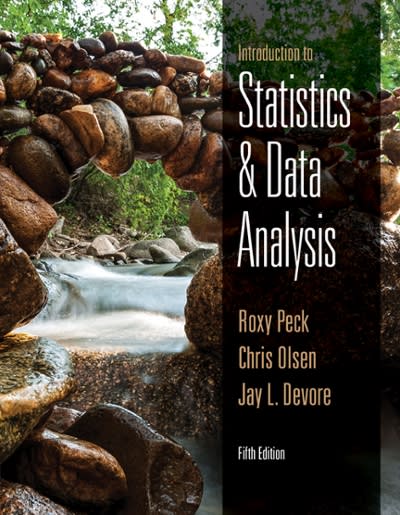11.29 The paper The Truth About Lying in Online Dating Profiles (Proceedings, Computer-Human Interactions [2007]: 14) describes...
Question:
11.29 The paper “The Truth About Lying in Online Dating Profiles”
(Proceedings, Computer-Human Interactions [2007]:
1–4) describes an investigation in which 40 men and 40 women with online dating profiles agreed to participate in a study. Each participant’s height (in inches) was measured and the actual height was compared to the height given in that person’s online profile.
The differences between the online profile height and the actual height (profile 2 actual) were used to compute the values in the accompanying table.
Men Women xd 5 0.57 xd 5 0.03 sd 5 0.81 sd 5 0.75 n 5 40 n 5 40 For purposes of this exercise, assume it is reasonable to regard the two samples in this study as being representative of male online daters and female online daters. (Although the authors of the paper believed that their samples were representative of these populations, participants were volunteers recruited through newspaper advertisements, so we should be a bit hesitant to generalize results to all online daters.)
a. Use the paired t test to determine if there is convincing evidence that, on average, male online daters overstate their height in online dating profiles.
Use a 5 .05.
b. Construct and interpret a 95% confidence interval for the difference between the mean online dating profile height and mean actual height for female online daters. (Hint: See Example 11.8.)
c. Use the two-sample t test of Section 11.1 to test H0: mm 2 mf 5 0 versus Ha: mm 2 mf . 0, where mm is the mean height difference (profile 2 actual)
for male online daters and mf is the mean height difference (profile 2 actual) for female online daters.
d. Explain why a paired t test was used in Part (a)
but a two-sample t test was used in Part (c).
Step by Step Answer:

Introduction To Statistics And Data Analysis
ISBN: 9781305445963
5th Edition
Authors: Roxy Peck, Chris Olsen, Jay L Devore






